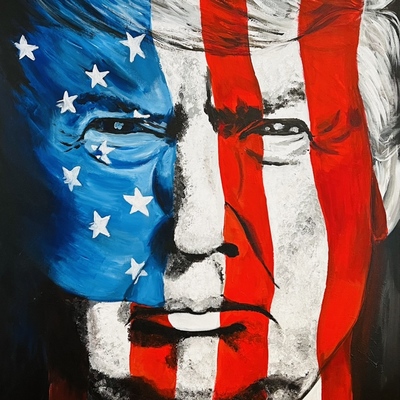Stay informed on the latest Truth Social posts from Donald Trump (@realDonaldTrump) without the doomscrolling. Consider it a public service for your mental health. (Why?)
- The Wall Street Journal Editorial Board is negative on Trump and tariffs due to being China-centric or globalist.
- The Wall Street Journal Editorial Board prefers China and the world to "WIN, BABY, WIN."
- Tariffs are bringing hundreds of billions of dollars into the U.S. at an unprecedented rate.
- The United States would be economically defenseless without the ability to charge tariffs.
- Crooked, Radical Left Judges are the only entity capable of destroying the United States.
The post emphasizes the economic benefits of tariffs and asserts their necessity for national economic defense. This rhetoric, while a known policy stance, signals a continued focus on protectionist trade measures, particularly concerning China. This could influence investor sentiment regarding companies with international supply chains or significant exposure to global trade, potentially affecting earnings outlooks and market valuations within the S&P 500, particularly for sectors sensitive to trade policies.
The post discusses economic defense through tariffs and criticizes entities for being 'China centric' or 'Globalists,' implying a competitive international economic stance. It does not contain direct threats of military action or ultimatums, focusing more on economic policy and internal political critiques, thus the geopolitical conflict risk remains low.
- Commodities: The emphasis on tariffs, particularly concerning China, suggests a continuation or intensification of trade friction. This could lead to concerns about global growth, potentially dampening industrial commodity demand (e.g., Copper) but potentially supporting safe-haven assets like Gold (XAU) if trade tensions escalate further. Oil (WTI) could react to overall economic growth fears. Short-Term Watchlist: XAU/USD price action, headlines on trade negotiations/disputes. Medium-Term Focus: Inflation trends, global demand forecasts, USD trajectory.
- Currencies (Forex): The protectionist rhetoric might strengthen the US Dollar (DXY) as capital flows to a perceived safer haven amidst global trade uncertainty, or weaken it if trade wars are seen as detrimental to US growth. Pairs like USDCNH would be particularly sensitive to tariff rhetoric and trade relations. Short-Term Watchlist: Global risk sentiment, Treasury yields. Medium-Term Focus: Central bank policy divergence, global growth differentials.
- Global Equities: The reiteration of a pro-tariff stance creates uncertainty for global trade-exposed companies. This could negatively impact S&P 500 companies with significant reliance on international supply chains or exports, as well as equities in markets like STOXX 600 (Europe) and Nikkei 225 (Japan) that are highly sensitive to global trade flows. Hong Kong's Hang Seng could be particularly vulnerable due to its exposure to China. Short-Term Watchlist: VIX spike, earnings reports from multinational corporations. Medium-Term Focus: Earnings revisions, macro data, global capital flows.
- Fixed Income (Bonds): Increased trade tensions and economic uncertainty could lead to a flight to safety, increasing demand for U.S. Treasury bonds and potentially lowering yields (US 10Y, 2Y). Conversely, if tariffs are perceived as inflationary, yields could rise. Credit spreads might widen if economic outlooks deteriorate. Short-Term Watchlist: UST 10Y yield levels, credit ETF flows. Medium-Term Focus: Inflation expectations, fiscal policy, global economic data.
- Volatility / Derivatives: The discussion around trade policy and its potential economic impact could increase market uncertainty, potentially leading to a spike in the VIX. Options positioning might reflect hedging activity related to trade headlines. Short-Term Watchlist: VIX levels, 0DTE flow. Medium-Term Focus: Volatility regime shifts related to macro policy.
- Crypto / Digital Assets: Bitcoin (BTC) might behave as a risk-on asset, correlating with broader equity markets if the sentiment is negative due to trade wars. However, in scenarios of severe economic uncertainty, it might also be seen by some as an alternative asset. Its correlation to tech stocks and overall liquidity remains key. Short-Term Watchlist: BTC/USD price action, funding rates. Medium-Term Focus: Regulatory news, macro liquidity backdrop.
- Cross-Asset Correlations and Systemic Risk: A renewed focus on tariffs could exacerbate trade tensions, potentially leading to a breakdown in normal correlations (e.g., equities and bonds selling off together) if global growth concerns intensify. Watch for signs of liquidity stress. Short-Term Watchlist: MOVE index, gold/USD co-movement. Medium-Term Focus: Central bank interventions, market plumbing stress.
- Retail Sentiment / Market Psychology: The strong rhetoric against "Globalists" and for "Tariffs" could resonate with a segment of retail investors who favor protectionist policies or view them as beneficial for domestic industries. This might influence sentiment towards specific sectors or companies perceived as benefiting from tariffs, but is unlikely to trigger broad meme stock speculation directly. Short-Term Watchlist: Social media trends on trade-related stocks. Medium-Term Focus: Social media influence on policy perception.

